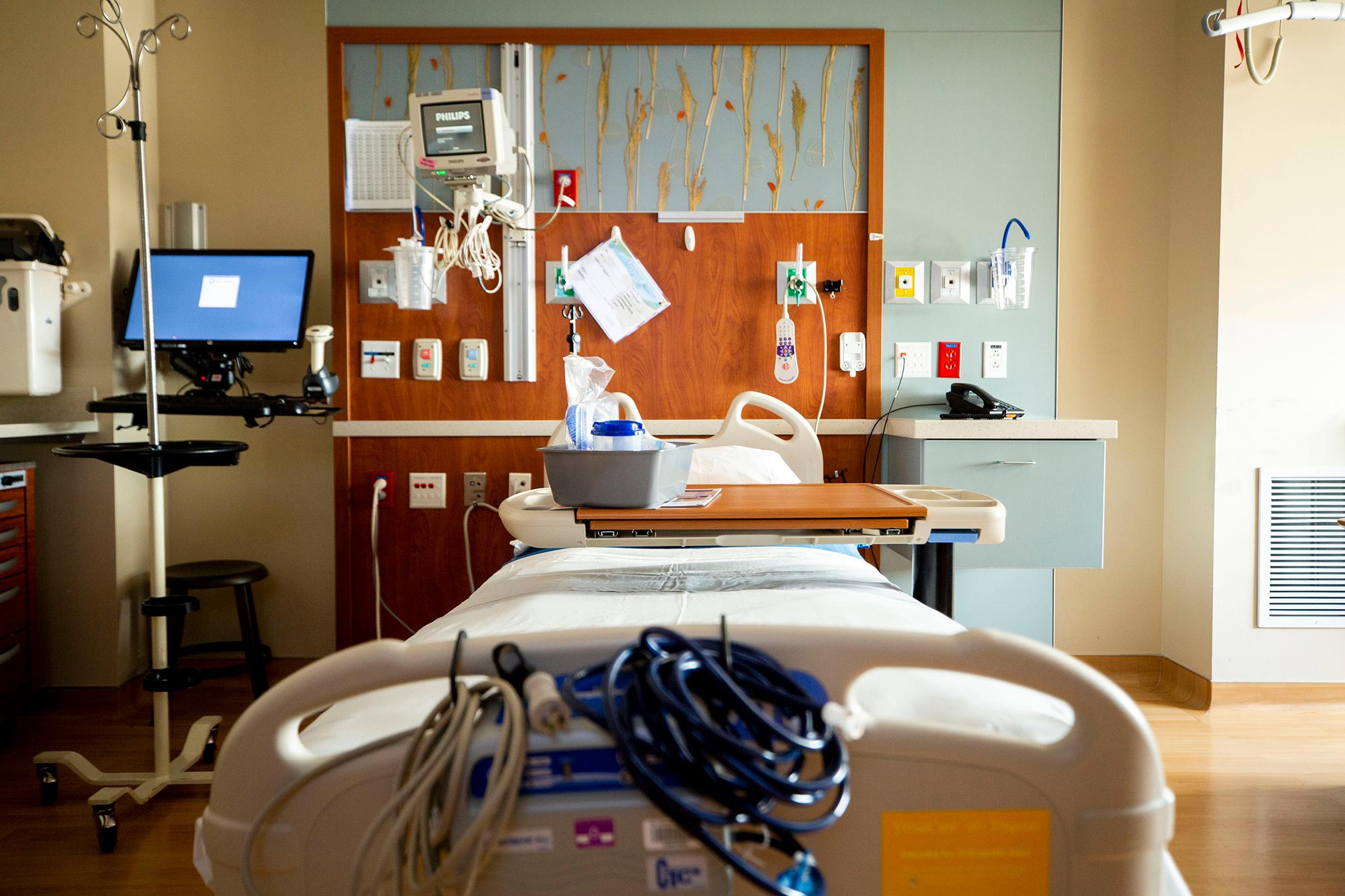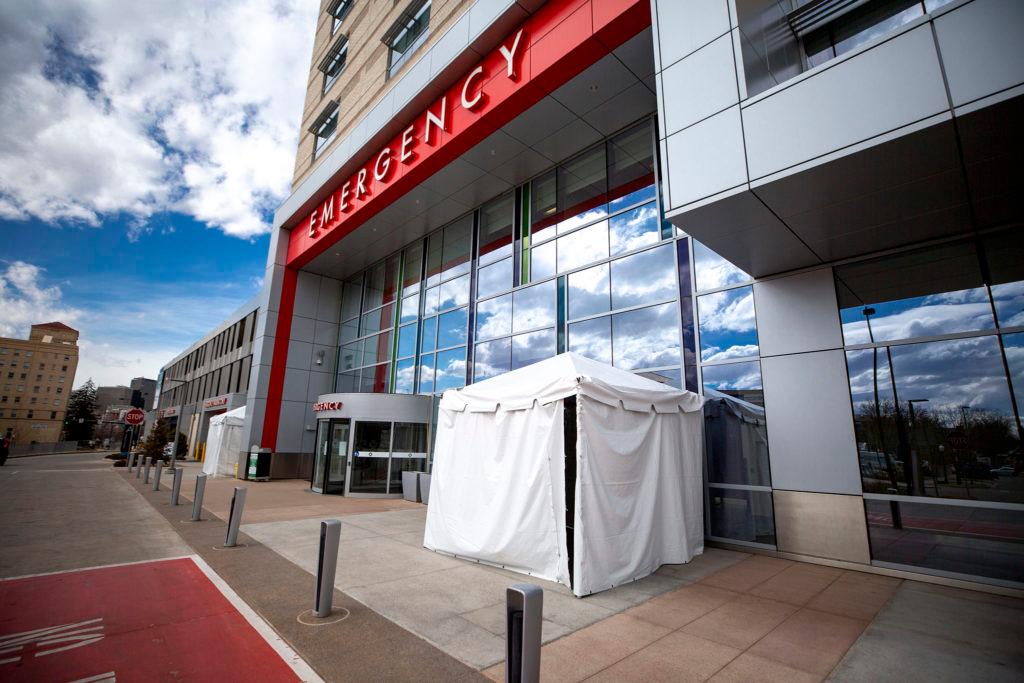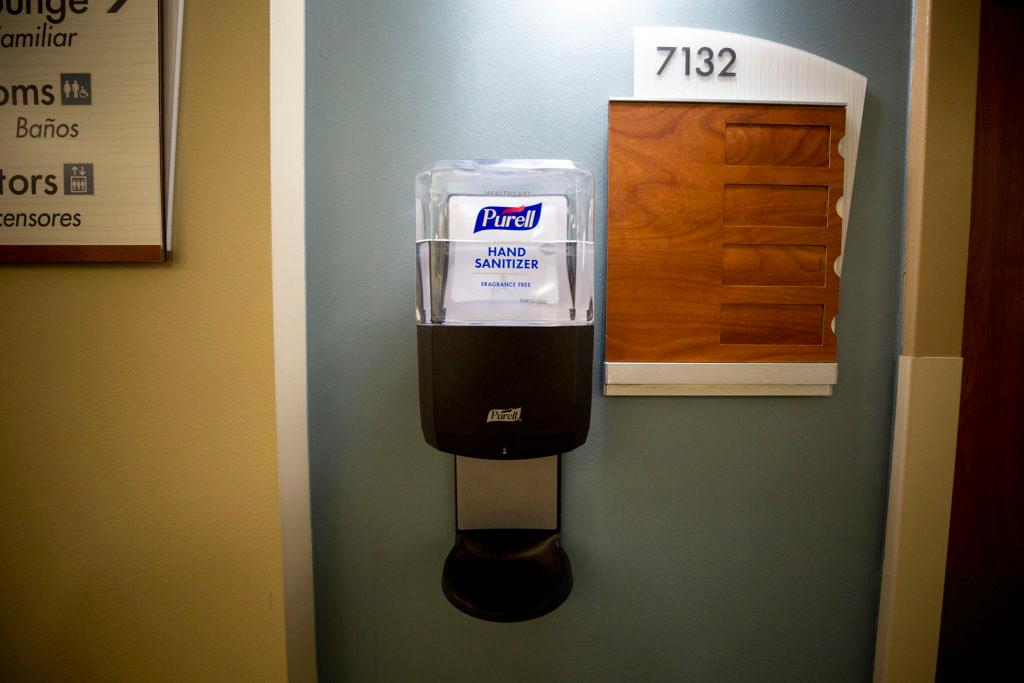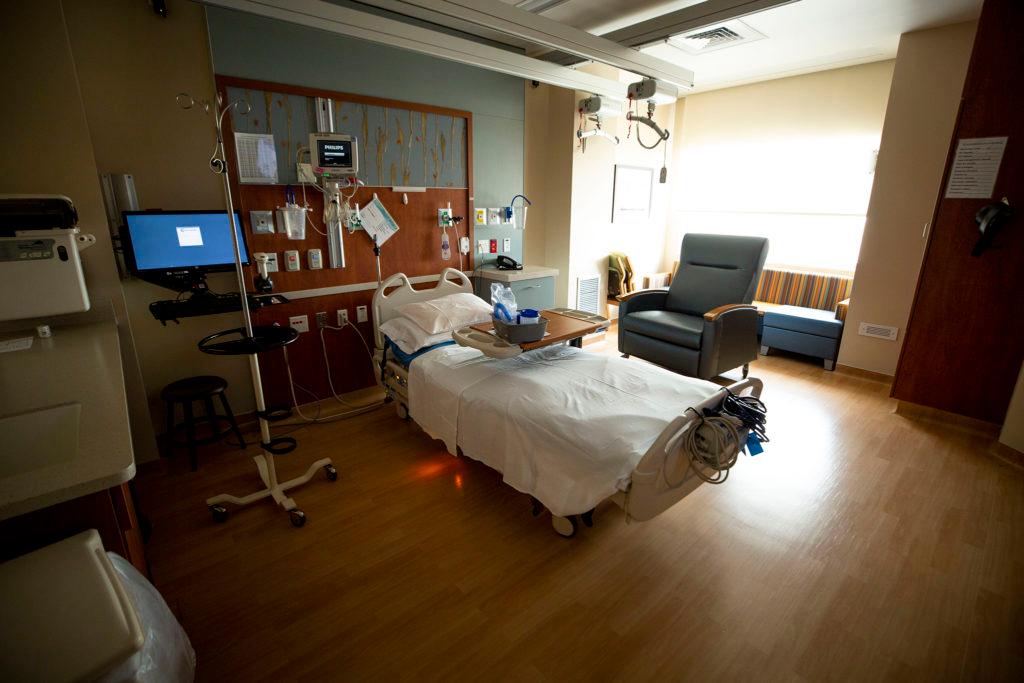
As the number of cases of COVID-19 in Colorado ticks up, hospitals are preparing for a surge in patients sickened by the new coronavirus. But they say the severity of Colorado’s outbreak depends in large part on how the community responds over the next days and weeks to contain the spread.
Colorado’s sprawling health system includes roughly 100 hospitals, employs 96,000 workers and serves millions of patients a year. It’ll likely be the linchpin determining how well Colorado deals with what many in the state’s health community view as a coming storm of unknown dimensions.
The day before Gov. Jared Polis announced new emergency measures, nearly 300 people from hospitals around the state joined a conference call conducted by the Colorado Hospital Association to discuss the gravity of the situation and what steps to take.
“We are in pandemic territory,” said Dr. Daniel Shodell, the deputy director of the state’s Division of Disease Control and Public Health Response, although he steered clear of saying it was a pandemic now. “We are taking this very seriously, and the geographic and population spread is of great concern.”
He said given what experts understand about how serious COVID-19, the disease caused by the new coronavirus, can be and its ease of transmissibility, “it does have potential to overwhelm health systems without appropriate preparation and response.”
A pandemic, Shodell explained, is an increase, often sudden, in the number of cases of a disease spread over several countries or continents. It usually affects a large number of people. On Tuesday, the death toll from COVID-19 topped 4,000 globally, with more than 113,000 people infected. At least 849 cases were reported across the U.S., according to CNN.

The health system’s goal now is to essentially slow the spread of the disease and mitigate its potential damage — not contain it.
In Monday’s conference call, which CPR sat in on, Shodell presented charts laying out the most potentially ominous scenarios. One compared the novel coronavirus with other major disease outbreaks based on fatality rate and the average number of people infected by each sick person. It included global headline-makers like bird flu, MERS, Ebola and SARS, as well as more routine bugs like seasonal flu, the common cold and chickenpox.
Which path — dramatic or more routine — that COVID-19 takes depends on how deadly the new coronavirus turns out to be and how fast it spreads. Best case, this outbreak could turn out to be more like the seasonal flu; in a worst-case scenario, it looks more like the Spanish flu of a century ago. It’s estimated that virus infected about a third of the world’s population (500 million) in 1918. At least an estimated 50 million died worldwide, including about 675,000 occurring in the U.S.

The response to the threat by the state’s vast health community, as well as the everyday actions of individuals and employers, could prove critical. That’s why state government and hospitals are ramping up the response.
“We have all hands on deck,” Shodell said.
Shodell demonstrated two possible paths Colorado could take in his second graph.
A pandemic outbreak with no efforts by the public health system to intervene results in a big spike in cases, a percentage that are serious or fatal. That type of scenario could cripple the health care system, potentially hobbling the number of sick people it can care for.
“It is a huge concern,” said Dr. Darlene Tad-y, the hospital association’s vice president of clinical affairs. “The progression of this or the spread of coronavirus could certainly overwhelm the systems that we have in place.”
But if the community and health professionals are able to slow the spread, to prevent a big spike in cases, the system will be able to respond. The outbreak could last longer, but it would move more slowly and take a lesser toll because of that.
- Colorado Coronavirus Efforts Under State Of Emergency Will Include Additional Paid Sick Leave For Workers And More Tests And Labs
- Colorado Will Require Paid Sick Leave For 15% Of Workers In Response To Coronavirus
- Blood Bank Supplies Are Low Due To COVID-19 Concerns. Here’s How To (And Who Can) Donate
- Colorado Lawmakers Ask: What Happens At The Capitol If Coronavirus Spreads?
- More Conferences That Would Have Come To The Denver Metro Are Cancelling Or Postponing Due To Coronavirus
- In Summit County, Where Colorado’s First Positive Coronavirus Case Was Found, It’s Mostly Business As Usual
- Colorado Working To Increase Coronavirus Testing Capacity
The scene in Italy, which has suffered a body blow from the new coronavirus just weeks after its first confirmed case, is instructive of what the worst-case scenario looks like. On Monday, it announced severe nationwide travel restrictions as the government grappled with an outbreak that swamped its health system, hammered its economy and killed the most people of any country besides China. That’s partly because of how quickly the spike in cases happened.
Tad-y, an internal medicine trained hospitalist, said in an interview after the presentation, one unknown is just what proportion of those who get infected develop serious illnesses that require more intensive medical care.
“The numbers that we have seen so far have indicated that the majority of people who will get coronavirus infection will have mild disease,” she said. “But we have seen some of the numbers showing that close to 14 or 15 percent may get a severe disease and up to five percent will have critical illness from coronavirus.”
That rate of critical illness would be “very concerning,” she said.
If everybody were to show up at once to a hotel, there are only so many rooms, said Dr. Ken Lyn-Kew, a National Jewish Health pulmonary critical care physician.
“The same analogy for the health care system is if all the patients show up at once, there are only so many beds in a hospital to take care of them. There's only so many resources available," Lyn-Kew said.
But he said if the spread of the virus can be limited and slowed down, “we always have space in the health care system to take care of them.”

The community, including ordinary people and the private sector, has a big influence on how bad COVID-19 gets.
A robust response could cut down both the number of cases and health effects. The repeated messages to stay home when ill, wash your hands, and cover coughs and sneezes are because those steps can work, public health professionals say.
Dr. Michelle Barron, the medical director of infection prevention at the University of Colorado Hospital, pointed to other disease outbreaks as a demonstration of what can happen. She described how the SARS virus exploded in Toronto in 2003, with early transmission of the disease to a number of people leading to many others getting sick.
“It can have that domino effect,” she said.
Meanwhile, Taiwan’s early actions to contain the new coronavirus by educating the public may have limited the negative effects.
“Certain strategies that we implement are really intended to limit, so overall decrease the number of cases that we see and slow transmission,” state epidemiologist Dr. Rachel Herlihy said.
Read more: What is Colorado doing to address the spread of COVID-19?
Community measures to combat a pandemic might include school closures and dismissals and “social distancing,” things like telecommuting, canceling or postponing large gatherings, dividing classes for distance learning and disinfecting frequently touched surfaces in homes, child care facilities, schools and workplaces.

Colorado’s health care system is already somewhat stretched. This is a public health stress test.
The wide-ranging presentation Monday included discussion of testing, staffing, and supplies. It gave an assessment that was at turns reassuring and sobering.
“I would say that Colorado, in general, is ready and getting more ready by the day,” said Julie Lonborg, the Colorado Hospital Association’s senior vice president of communications. “Are we ready enough? I think it's premature to know that as this moves.”
Lonborg said hospitals are ready to handle a big influx, but that the available beds were already pretty full. Many hospitals are “at capacity already right now because of seasonal flu, but at least we have the beds in the system,” she said.
Hospitals could move or discharge some patients to make room for others who are more critically ill.
“We have the bed capacity with which to do that. And that is critical. And that's not something that you can build overnight,” Lonborg said.
Colorado’s hospitals, especially its bigger systems, have the ability to expand into under- or little-used spaces as well as to isolate sick patients, including in negative pressure isolation rooms, which are typically used for patients with airborne infections to prevent the spread of disease.
The state has ramped up testing capacity.
Polis laid out plans Tuesday to launch a new drive-up lab for patients who have been directed to get tested by a doctor's order opening Wednesday, and adding more testing capacity by working with LabCorp.
The biggest bottlenecks in the systems would be staffing and supplies, Tad-y said.
“Do we have the staff and clinicians we need to be able to take care of this number of patients?” said Tad-y. She noted that medical professionals need gear, which includes masks, gloves, eye protection and gowns, so they don’t get sick and can care for patients.

Backstopping the entire supply system is what’s called the Strategic National Stockpile. It’s the nation’s largest supply of potentially life-saving pharmaceuticals and medical supplies, meant for use in a public health emergency severe enough to cause local supplies to run out.
The first line of support from the stockpile is to send a broad range of pharmaceuticals and medical supplies. Contents are pre-packed and ready for quick delivery. Colorado has a state cache, which includes supplies of everything from N-95 protective masks and I.V. poles to costs and tourniquets, in a warehouse in Grand Junction. Should a hospital run low on critical supplies, it could request more, even from other states.
“We're hoping that somebody within this region or a state nearby can fulfill that request so that we can support our partners as best as possible,” said Greg Stasinos, with the state’s office of emergency preparedness and response.
But medical suppliers warned that potential disruptions in the supply chain could make it hard to get ahold of vital items like surgical and isolation face masks and gowns, as well as sanitizer and disinfectant wipes.
Disruptions could affect even the raw materials used for manufacturing. A large percentage of personal protective equipment is manufactured in Hubei province in China, which had extended mandatory factory closure through March 10, said Tyler Altman, division sales manager with Medline Industries, Inc.
“I would expect a reduction in capacity and delayed shipments from factories,” Altman said.
He said highways, public transport, rail, river and air travel had been restricted to emergency medical teams only. Also, the Chinese government was prioritizing domestic distribution, making it harder to get much needed supplies from China to the U.S.
“Air flight is challenging because there's not as many flights and that's one of the many hiccups,” Altman said.
Given that reality, Altman urged hospitals to take steps such as keeping more protective N-95 masks “under lock and key” and removing masks from hospital entrances where they’re often handed out for free.
“We've heard stories about people coming in and taking a full box and walking right out,” Altman said. “Conservation is key. We’re hoping that we can get through and get back in a better situation. But in the meantime, we should conserve as much as possible, because we still don't know what the next couple of weeks look like.”
Lonborg said Colorado hospitals do have experience dealing with major emergencies, from natural disasters like floods and fires to school shootings.
“So it's not at all unusual for us to convene our members,” she said.
Still, she said, a conference call to deal with a possible pandemic — that’s unusual.









